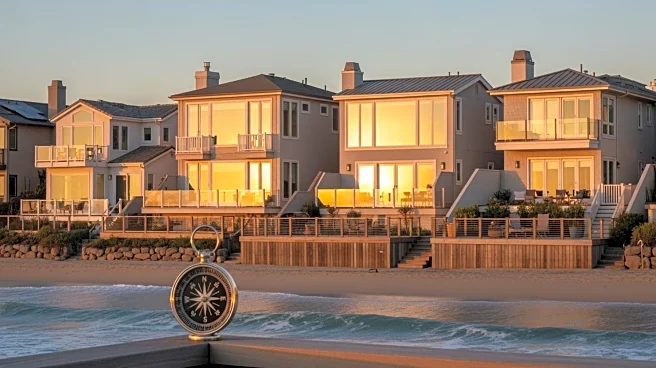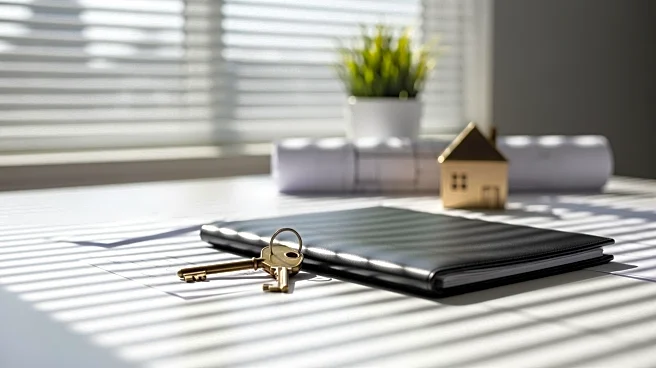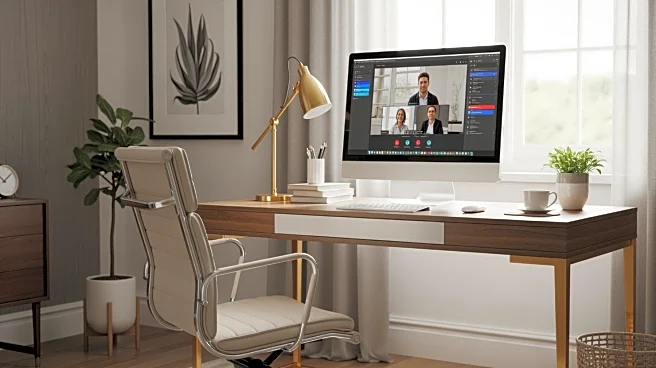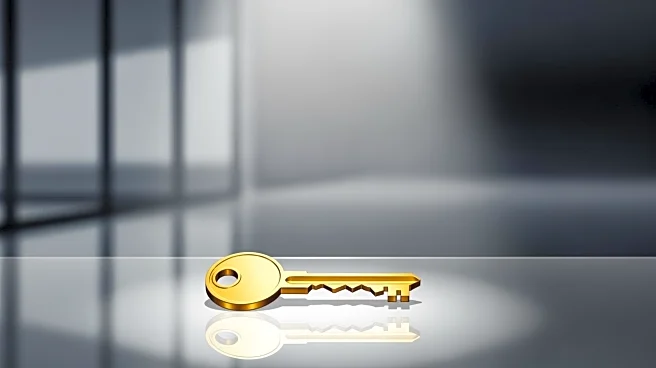What's Happening?
Realtor.com has released a new analysis highlighting the fastest-growing home features in real estate listings. WaterSense fixtures, which are designed to use at least 20% less water and save energy, have
seen a 289.6% increase in mentions year-over-year. These fixtures are part of a broader trend towards energy efficiency and sustainability in home design. Other features gaining popularity include biophilic designs that integrate indoor and outdoor spaces, and electric vehicle charging stations, which have increased by 91.6%. The analysis indicates a shift away from traditional features like formal dining rooms and three-car garages, as modern buyers prioritize functionality and environmental impact.
Why It's Important?
The growing emphasis on energy-efficient and sustainable home features reflects changing consumer preferences and environmental concerns. As homeowners seek to reduce utility costs and minimize their ecological footprint, features like WaterSense fixtures and biophilic designs are becoming more desirable. This trend could influence real estate markets by increasing the value of homes equipped with these features, potentially leading to higher sales prices. Additionally, the rise in electric vehicle charging stations suggests a growing acceptance of electric vehicles, which could impact the automotive industry and infrastructure development.
What's Next?
As the demand for energy-efficient and sustainable home features continues to rise, builders and developers may increasingly incorporate these elements into new constructions and renovations. Real estate agents might focus on highlighting these features in listings to attract environmentally conscious buyers. Furthermore, the shift towards smart home technology, as indicated by the popularity of built-in coffee systems and smart lighting, suggests that homes will continue to evolve to meet the needs of remote work and digital lifestyles.
Beyond the Headlines
The decline in popularity of traditional features like formal dining rooms and Old-World European aesthetics points to a cultural shift in home design preferences. As open-concept layouts become more common, the emphasis is on creating spaces that are both functional and aesthetically pleasing. This could lead to long-term changes in architectural styles and interior design trends, as homeowners seek to balance modernity with comfort and efficiency.











